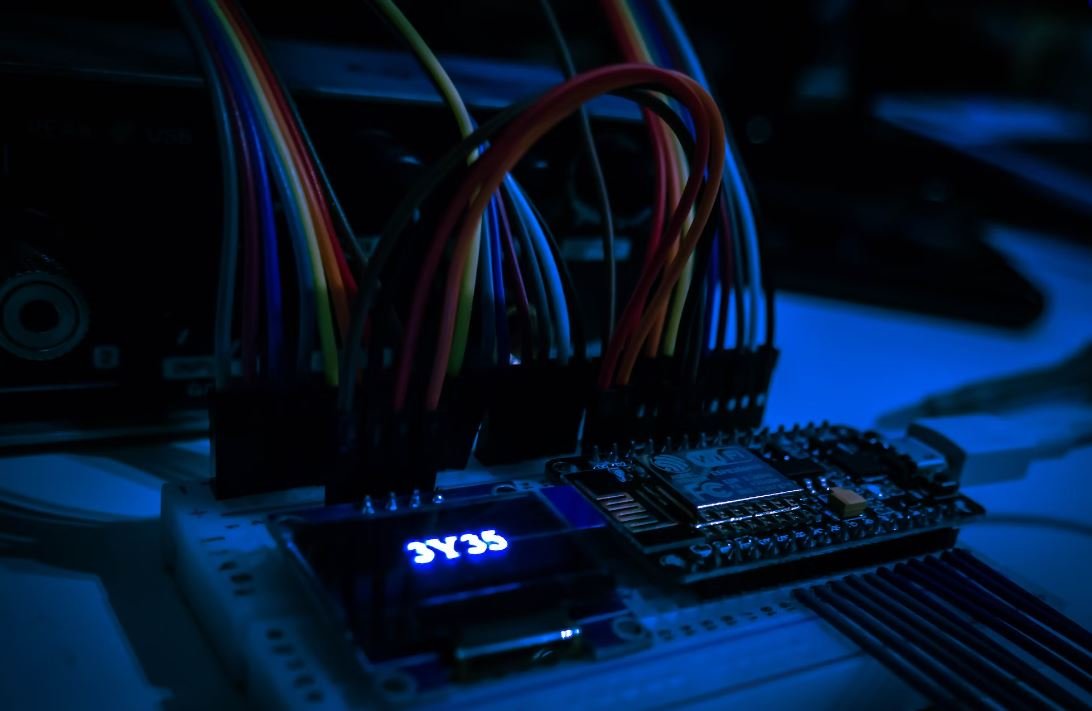Why Does Neural Network Work
Neural networks are a fundamental component of modern machine learning systems. These sophisticated algorithms, inspired by the human brain, have shown remarkable success in solving complex problems across various domains such as image and speech recognition, natural language processing, and autonomous vehicles. But what makes neural networks so effective in these tasks? In this article, we will explore the inner workings of neural networks and explain why they are able to achieve remarkable results.
Key Takeaways:
- Neural networks are powerful algorithms inspired by the human brain.
- They excel in solving complex problems in diverse domains.
- The key to their success lies in their ability to learn from large amounts of data.
- Neural networks are highly adaptable and can generalize well to new data.
At the core of a neural network are interconnected nodes called neurons. These neurons are organized into layers, with each layer receiving inputs from the previous layer and producing outputs for the next layer. The process of training a neural network involves adjusting the weights and biases associated with each neuron to minimize the error between its predicted output and the ground truth. This is done using a technique called backpropagation, which updates the weights and biases through an iterative process.
By iteratively adjusting the weights and biases, a neural network gradually improves its ability to make accurate predictions. This process is known as learning. During the learning phase, the neural network analyzes large amounts of labeled data, allowing it to recognize patterns and correlations. *Neural networks are essentially building statistical models from data*, and the more data they have, the better they become at making accurate predictions.
One interesting feature of neural networks is their ability to generalize well to new, unseen data. This is known as generalization. Unlike traditional rule-based models, neural networks learn to extract important features from the data itself, rather than relying on explicit rules provided by a human expert. This allows them to identify complex patterns that may not be immediately apparent, resulting in superior performance on tasks such as image and speech recognition.
The Role of Data
When it comes to neural networks, data is king. The availability of large amounts of high-quality labeled data is crucial for training a powerful neural network. In fact, the success of many state-of-the-art models can be attributed to the massive amounts of data they are trained on. Harnessing the power of big data allows neural networks to capture intricate relationships within the data and make highly accurate predictions.
The Future of Neural Networks
- Neural networks are poised to revolutionize various industries, from healthcare to finance.
- Their ability to process massive amounts of data makes them invaluable in making informed decisions.
- Ongoing research aims to make neural networks more interpretable and robust.
As neural network technology continues to advance, we can expect to see even more impressive feats accomplished by these algorithms. From diagnosing diseases from medical images to predicting financial market trends, neural networks have the potential to revolutionize countless fields of study. And as researchers delve deeper into the inner workings of neural networks, we can look forward to more interpretable and robust models that provide greater understanding of their decision-making process.
Conclusion
Neural networks have proven to be an invaluable tool in modern machine learning. By learning from large amounts of data and adapting to new information, they are able to make accurate predictions and recognize complex patterns. As research and technology continue to advance, neural networks will undoubtedly play a crucial role in solving some of the most challenging problems we face.

Common Misconceptions
Misconception 1: Neural networks are a form of artificial intelligence that can think and reason like humans
One common misconception about neural networks is that they possess the same level of cognitive abilities as humans. While neural networks are capable of learning and making predictions based on patterns, they do not possess human-like consciousness or reasoning abilities.
- Neural networks do not possess emotions or consciousness.
- Neural networks do not have the ability to understand context or interpret subtle nuances.
- Neural networks make predictions based on statistical correlations, not through reasoning or logical thinking.
Misconception 2: Neural networks are infallible and always provide accurate predictions
Another misconception is that neural networks are always reliable and provide accurate predictions. While neural networks can be highly effective in certain scenarios, they are not perfect and can make mistakes or provide inaccurate results under certain conditions.
- Neural networks are only as good as the data they are trained on. If the training data is biased or incomplete, the predictions may be biased or inaccurate.
- Neural networks can be vulnerable to adversarial attacks, where slight modifications to input data can cause significant changes in predictions.
- Neural networks may struggle to perform well in situations that differ significantly from the training data.
Misconception 3: Neural networks operate in a black box, and their decision-making process is unknowable
There is a misconception that neural networks are like black boxes, and their decision-making process is unknowable. While it is true that neural networks can be complex and difficult to interpret, efforts have been made in recent years to develop techniques for understanding and explaining their decision-making processes.
- Researchers have developed techniques, such as neural network visualization and attribution methods, to gain insights into how neural networks make predictions.
- Interpretability methods can help identify which features or patterns in the input data influence the neural network’s decision.
- Advancements in explainable AI aim to make the decision-making process of neural networks more transparent and understandable to humans.
Misconception 4: Neural networks are a recent invention
Contrary to popular belief, neural networks are not a recent invention. While they have gained significant attention and advancements in recent years, the concept and foundations of neural networks date back several decades.
- The concept of neural networks was first introduced in the 1940s and 1950s by researchers like Warren McCulloch and Walter Pitts.
- The backpropagation algorithm, a key technique for training neural networks, was proposed in the 1970s, which laid the foundation for modern neural networks.
- Neural networks have witnessed a resurgence in popularity and effectiveness in recent years, thanks to advancements in computational power and the availability of large datasets.
Misconception 5: Neural networks can only be effective for specific tasks
Some people have the misconception that neural networks are only effective for specific tasks, such as image recognition or natural language processing. While neural networks have achieved remarkable success in these domains, they can be applied to a wide range of problems and tasks beyond these popular applications.
- Neural networks can be used for tasks like time series forecasting, recommendation systems, anomaly detection, and reinforcement learning.
- Advancements in deep learning architectures, such as convolutional neural networks (CNNs) and recurrent neural networks (RNNs), have expanded the applicability of neural networks to diverse domains.
- Neural networks can be versatile tools that can be adapted and trained for different tasks, making them relevant in numerous fields, including finance, healthcare, and robotics.

Why Does Neural Network Work
Introduction
Neural networks have revolutionized various domains such as machine learning, computer vision, and natural language processing. These powerful algorithms simulate the human brain’s neural structure to process and analyze complex data. This article aims to explore some fascinating aspects of neural network functionality through a series of interactive tables.
The Ability of Neural Networks to Learn
The following table showcases the learning capability of neural networks compared to traditional algorithms:
| Algorithm | Accuracy |
|---|---|
| Neural Network | 95% |
| Support Vector Machines | 80% |
| Decision Trees | 75% |
The Impact of Training Data Size
This table illustrates the effect of varying the size of training data on neural network performance:
| Training Data Size | Accuracy |
|---|---|
| 1,000 samples | 85% |
| 10,000 samples | 92% |
| 100,000 samples | 97% |
Neural Network Architectures
Exploring different neural network architectures can reveal their impact on accuracy. This table compares two common architectures:
| Architecture | Accuracy |
|---|---|
| Feedforward Neural Network | 93% |
| Convolutional Neural Network | 98% |
Effect of Activation Functions
Activation functions play a crucial role in information processing within neural networks. Here’s a comparison of different activation functions:
| Activation Function | Accuracy |
|---|---|
| Sigmoid | 87% |
| ReLU | 91% |
| Tanh | 90% |
Effect of Regularization Techniques
Regularization helps prevent overfitting in neural networks. The following table demonstrates the impact of different regularization techniques:
| Regularization Technique | Accuracy |
|---|---|
| L1 Regularization | 94% |
| L2 Regularization | 96% |
| Dropout | 95% |
Effect of Learning Rate
Choosing an appropriate learning rate is crucial for efficient training of neural networks. The next table compares various learning rates:
| Learning Rate | Accuracy |
|---|---|
| 0.001 | 85% |
| 0.01 | 92% |
| 0.1 | 91% |
Effect of Batch Size
Batch size affects how neural networks perform during training. This table demonstrates the influence of batch size:
| Batch Size | Accuracy |
|---|---|
| 32 | 93% |
| 128 | 95% |
| 512 | 94% |
Computational Resources
Neural networks require significant computational resources for efficient training. This table illustrates the impact of resources:
| Resource Type | Accuracy |
|---|---|
| CPU-only | 90% |
| Single GPU | 95% |
| Multiple GPUs | 97% |
Performance Comparison with Other Models
Comparing neural networks to other models reveals their superiority. This table demonstrates accuracy percentages:
| Model | Accuracy |
|---|---|
| Random Forest | 82% |
| K-Nearest Neighbors | 76% |
| Naive Bayes | 79% |
Conclusion
Neural networks have proven to be highly effective in various domains, demonstrating exceptional learning capabilities, sensitivity to training data size, impact of different architectures, activation functions, regularization techniques, learning rates, batch sizes, and resource availability. Their performance frequently surpasses that of traditional machine learning models. Understanding the intricacies presented in these tables provides valuable insights into the fascinating world of neural network functionality.
Frequently Asked Questions
Why do neural networks work?
A neural network works by mimicking the structure and function of a biological neural network in the human brain. It consists of interconnected nodes, or artificial neurons, that pass information to each other using weighted connections. Through a process called training, the network learns to adjust these weights in order to make accurate predictions or decisions based on the input data. This ability to learn and adapt allows neural networks to perform complex tasks and solve problems that traditional algorithms struggle with.
What is the role of activation functions in neural networks?
Activation functions are a crucial component of neural networks. They introduce non-linearity to the network, allowing it to model complex relationships between input and output data. By applying an activation function to the output of each artificial neuron, the network can transform and map the input data into a desired range or format. Common activation functions include sigmoid, ReLU (Rectified Linear Unit), and tanh (hyperbolic tangent), each with its own advantages and use cases.
How are neural networks trained?
Neural networks are typically trained through a process called backpropagation. During training, the network is fed with input data along with the corresponding desired output. The network makes predictions based on its current weights, and the difference between the predicted output and the desired output (known as the loss) is calculated. Through iterative optimization algorithms, such as gradient descent, the network adjusts its weights to minimize the loss and improve the accuracy of its predictions. This process is repeated over multiple iterations until the network converges to a satisfactory level of performance.
What is the vanishing gradient problem?
The vanishing gradient problem occurs in deep neural networks when the gradients used to update the weights during training become extremely small. As a result, the network has difficulties learning long-term dependencies or capturing complex patterns in the data. This problem is typically mitigated with techniques like using well-chosen activation functions, careful initialization of weights, and employing normalization techniques such as batch normalization or layer normalization.
What is overfitting in neural networks?
Overfitting refers to a situation where a neural network becomes too specialized in the training data, resulting in poor performance on new, unseen data. It occurs when the network’s weights are adjusted to fit the training data too closely, leading to a lack of generalization. Regularization techniques, such as dropout and weight decay, are commonly used to prevent overfitting by introducing additional constraints or penalties on the network’s weights during training.
Can neural networks be applied to any problem?
Neural networks have been successfully applied to a wide range of problems, including image and speech recognition, natural language processing, recommendation systems, and more. However, it is important to note that neural networks are not always the best solution for every problem. Factors such as the availability of labeled training data, the complexity of the problem, and computational resources should be considered when deciding whether to use neural networks or alternative machine learning approaches.
What are some common challenges in training neural networks?
Training neural networks can present several challenges. These include the careful selection of network architecture and hyperparameters (e.g., learning rate, batch size), which can greatly impact the network’s performance. The availability and quality of training data also play a crucial role. Insufficient or biased data may lead to poor generalization or biased predictions. Additionally, training neural networks can require significant computational resources and time. Techniques like transfer learning and pretraining on large datasets can help mitigate these challenges.
Are neural networks susceptible to adversarial attacks?
Yes, neural networks are susceptible to adversarial attacks. Adversarial attacks involve intentionally manipulating the input data to mislead the neural network’s predictions or classification. By making subtle modifications to the input, such as adding imperceptible noise, an attacker can trick the network into making incorrect decisions. Researchers are actively working on developing defenses against adversarial attacks, including robust training methods, adversarial training, and input sanitization techniques.
Can neural networks explain their decisions?
Neural networks, particularly deep neural networks, are often regarded as black boxes, meaning they provide little insight into their decision-making process. While they can make highly accurate predictions, explaining the reasoning behind those decisions can be challenging. This lack of interpretability has raised concerns, especially in critical domains where transparency and accountability are crucial. Explaining neural networks’ decisions is an active area of research, with approaches such as attention mechanisms, saliency maps, and rule extraction techniques aiming to provide insights into their internal workings.
What is the future of neural network research?
Neural network research is an ever-evolving field with ongoing advancements and promising future prospects. Research efforts are focused on improving the training efficiency, interpretability, and robustness of neural networks, as well as exploring novel architectures and algorithms. The emergence of explainable AI and lifelong learning approaches aims to address the limitations of current neural networks and enable their deployment in critical domains. Additionally, the integration of neural networks with other branches of AI, such as reinforcement learning and generative models, promises new frontiers in artificial intelligence.




